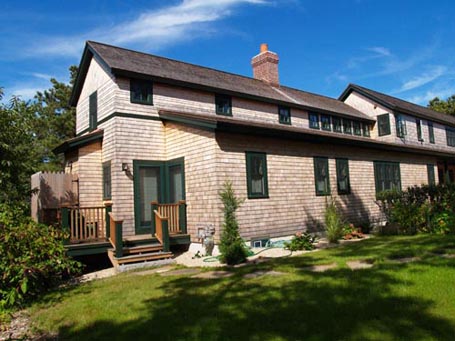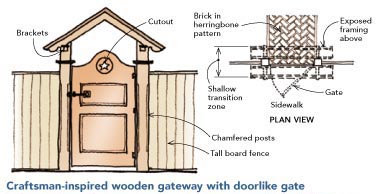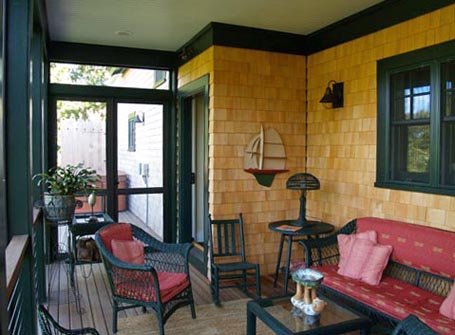
Entries from March 1, 2011 - March 31, 2011
101 things Katie Hutchison Studio (KHS) has learned designing homes, Part nine of ten
 Brewster Long House: Include clerestory windows and/or a roof monitor, where possible.See Part eight of the series here.
Brewster Long House: Include clerestory windows and/or a roof monitor, where possible.See Part eight of the series here.
81. Recommend that homeowners move out during renovations, if possible.
82. Consider incorporating renewable energy systems.
83. Provide a generous mud room.
84. Edit the program and design judiciously. (See Design Process.)
85. Include clerestory windows and/or a roof monitor, where possible. (See Brewster Long House.)
86. Don’t let “the tail wag the dog”. (See Don’t overlook intangible value and cost.
87. People either love or hate pocket doors.
88. Dismiss bum clients (Don-Draper style).
89. Don’t forget to provide egress windows in bedrooms.
90. Design/build arrangements sacrifice the benefits of the competitive bid process.
by Katie Hutchison for House Enthusiast
The secret behind continuing ed. bliss
 I remember an architectural coworker teasing me about my needing time to “take calligraphy classes or whatever”. I wasn’t taking a calligraphy class, and he knew it, but what struck me as so spot-on and funny about his dismissal of my extra-curricular pursuits is that I would have loved to have taken a calligraphy class then or now.
I remember an architectural coworker teasing me about my needing time to “take calligraphy classes or whatever”. I wasn’t taking a calligraphy class, and he knew it, but what struck me as so spot-on and funny about his dismissal of my extra-curricular pursuits is that I would have loved to have taken a calligraphy class then or now.
I’ve often pondered what it is about my “non-essential” creative endeavors that captivate me so. I look forward to them the way many anticipate a vacation on the beach or poolside. I find myself completely blissed out in a pin-hole photography class, a creative non-fiction workshop, or a plant-identification field-visit primer. What’s it all about?
mystery-of-being-human books
For a while now, I’ve been turning to books for the answer. There’s been a series of what I’ll call mystery-of-being-human books taking up space on my nightstand over the years, starting first with Stumbling on Happiness by Daniel Gilbert. Then, moving on to My Stroke of Insight by Jill Bolte Taylor, Ph.D., The 4-Hour Workweek by Timothy Ferriss, How We Decide by Jonah Lehrer, This Is Water by David Foster Wallace, The Upside of Irrationality by Dan Ariely, A Whole New Mind by Daniel H. Pink, and most recently Happiness at Work by Srikumar S. Rao, Ph.D.
Of course, I read other books in between these, but it wasn’t until finishing Happiness at Work a couple of weeks ago that I realized how much overlap there had been in the books cited above, to which I had gravitated. For me, they all seem to support an aspect of some inescapable truths; we all long for sublime connections to people, experiences and/or entities outside ourselves, and it is within our power to realize those connections. David Brooks describes such a drive, identified by current research in neuroscience, psychology, sociology and behavior economics, as “limerence”. Brooks explains in The New York Times that “… the unconscious mind hungers for those moments of transcendence when the skull line falls away and we are lost in love for another, the challenge of a task or the love of God”.
choosing how to perceive
Jill Bolte Taylor, a neuroanatomist, had a transcendent experience in the midst of a stroke, which struck the left hemisphere of her brain. In My Stroke of Insight she writes,
Submit your nomination for Historic Salem, Inc.’s 2011 Preservation Awards
 The Nathaniel Bowditch House, HSI headquartersTo Salemites, 17th, 18th and 19th century dwellings and buildings are part of the everyday backdrop we see on our way to the post office, coffee shop, and park. Historic architecture is part of our daily lives. So much so that we often forget how unique the fabric of our port city is. Now’s your chance to recognize those projects and people who have helped preserve it in the context of how we live now.
The Nathaniel Bowditch House, HSI headquartersTo Salemites, 17th, 18th and 19th century dwellings and buildings are part of the everyday backdrop we see on our way to the post office, coffee shop, and park. Historic architecture is part of our daily lives. So much so that we often forget how unique the fabric of our port city is. Now’s your chance to recognize those projects and people who have helped preserve it in the context of how we live now.
Take a look around your neighborhood, street, or even your own home and nominate a recently completed renovation project, preservation-minded person, or group of preservation-minded people for an Historic Salem, Inc. (HSI) 2011 Preservation Award. The deadline for submissions is April 15, 2011. Find the nomination form here.
Hannah Diozzi, the Chair of the Salem Historical Commission and one of the approximately seven jurors on the Preservation Awards Selection Committee, notes that the criteria for the project awards are generally based upon a combination of The Secretary of the Interior's Standards for the Treatment of Historic Properties from the National Park Service and the Salem Historical Commission Guidelines Notebook. She summarizes, “The kind of thing we look for is that the renovation is appropriate to the period when the house was built.”
Nominations for projects located in the four historic districts: McIntire, Salem Common, Derby Street and Lafayette Street are welcome as are projects located elsewhere in the city, like North and South Salem, the Willows, Bridge Street, and Gallows Hill.
Categories for nomination include: private residences, commercial properties, publicly-owned properties, properties owned by non-profits, landscape projects, and individuals/groups (companies, institutions, organizations) who have made notable contributions to Salem’s historic preservation.
Last year’s winners included D.I.Y homeowners, homeowners working with home professionals, developers, and the Peabody Essex Museum along with the Salem Fire Department for their respective disaster-management plan and response to the two-alarm fire at the Ropes Mansion in the summer of 2009.
This year’s winners will be recognized on May 18, 2011 at Historic Salem, Inc.’s Annual Meeting and will receive a certificate as well as a one year membership (or membership renewal) to Historic Salem, Inc.
You can support Salem’s historic preservation by making a nomination. Spread the word.
by Katie Hutchison for House Enthusiast and North Shore Art Throb
The threshold of exterior gateways
 Image excerpt from Fine Homebuilding Drawing Board column about exterior gateways.
Image excerpt from Fine Homebuilding Drawing Board column about exterior gateways.
An exterior gateway leading to your home can set the tone for what to expect within. Visit your local newsstand to find my latest Fine Homebuilding "Drawing Board" column, in the April/May 2011 issue, about shaping exterior gateways that shape expectation. Click here for a PDF of the column. "Transitioning with exterior gateways", Issue #218, April/May 2011. Reprinted with permission copyright 2010, The Taunton Press, Inc.
Visit the KHS publications page to see other magazine columns and articles I've written.
by Katie Hutchison for House Enthusiast
101 things Katie Hutchison Studio (KHS) has learned designing homes, Part eight of ten
 Brewster Long House: Include a screen porch where possible.See Part seven of this series here.
Brewster Long House: Include a screen porch where possible.See Part seven of this series here.
71. Know when a phone call (rather than an email) is warranted.
72. Attend to air sealing and weather stripping.
73. Anticipate structural layout/issues from the roof down, not the other way around.
74. Include a screen porch where possible. (See Brewster Long House above.)
75. Small projects generally cost more per square foot of construction than larger projects.
76. Design breathable construction which doesn’t trap moisture.
77. Neighbors can derail a project; respect them.
78. Creativity thrives amidst constraints.
79. The budget can be your friend; respect it.
80. Ask three general contractors to participate in the bid process.
by Katie Hutchison for House Enthusiast















